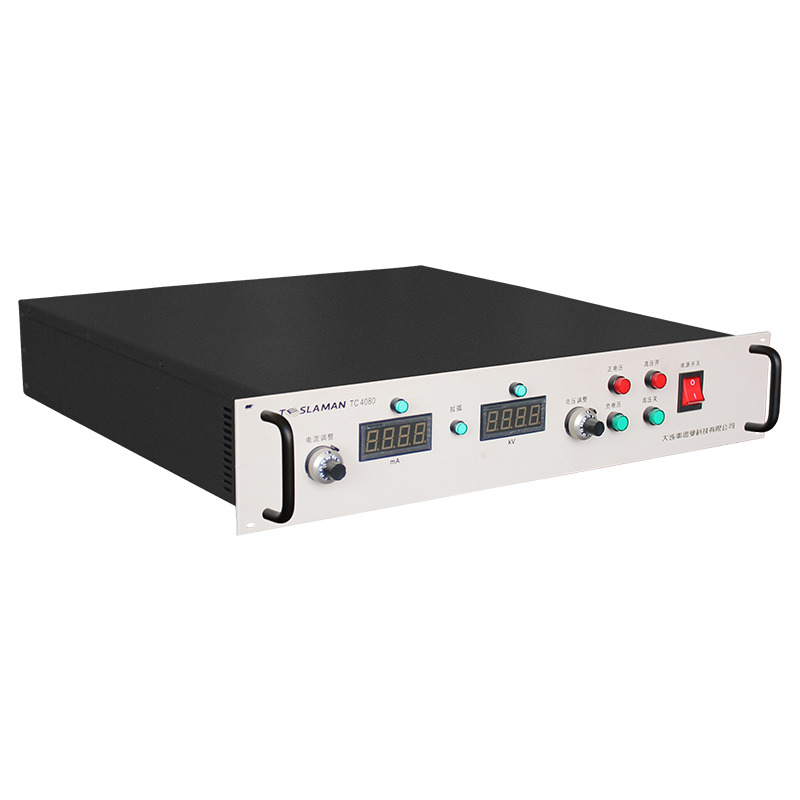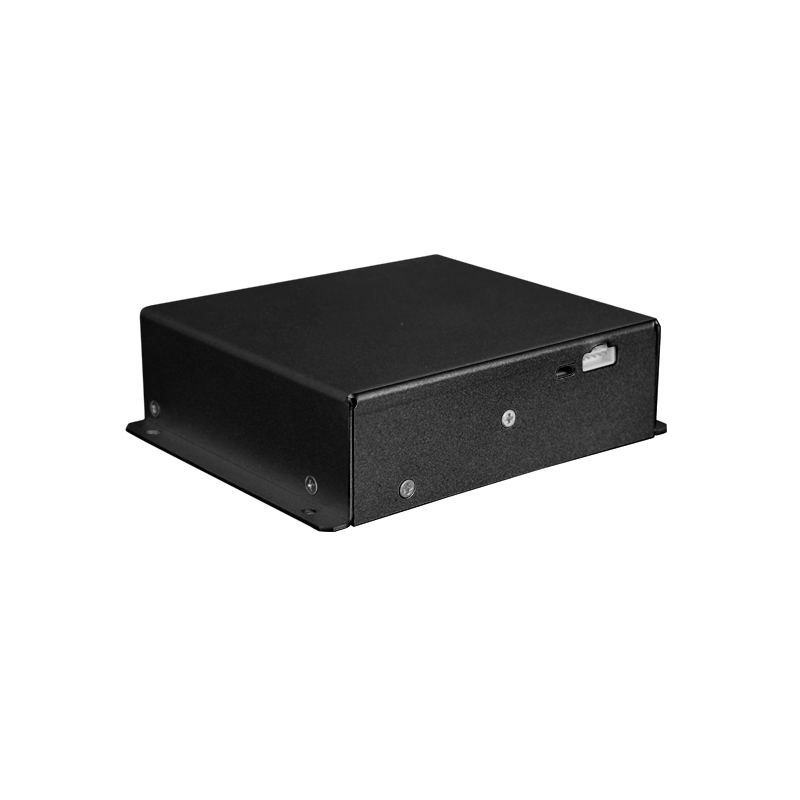Design of High-Voltage Power Supply for Electrostatic Chucks: Key Technologies in Multi-Layer Dielectric Withstand Voltage
1. Design Logic and Challenges of Multi-Layer Structures
Electrostatic chucks (ESCs) feature a sandwich structure: a dielectric adsorption layer, an electrode layer, and a base layer, each with distinct requirements:
• Dielectric layer: Requires high insulation (resistivity ≥10⁹ Ω·cm) and thermal conductivity (e.g., AlN ceramic >150 W/m·K), with volume resistivity controlled at 10⁸~10⁹ Ω·cm for electrostatic clamping.
• Electrode layer: Tungsten or molybdenum pastes ensure low resistivity (<10⁻⁵ Ω·cm) and high melting point (>2600°C).
• Base layer: Aluminum/copper alloys provide mechanical support, with thermal expansion coefficients (CTE) matching ceramics (ΔCTE <2 ppm/K).
Core conflict: The dielectric layer demands a low dielectric constant (ε<10) for insulation, while the electrode layer requires high conductivity. Gradient doping (e.g., yttrium oxide in AlN) mitigates electric field distortion at interfaces.
Table: Functions and Material Requirements of Multi-Layer Structures
Layer Function Materials Key Requirements
Dielectric Layer Adsorption & Insulation Al₂O₃, AlN ceramics Resistivity ≥10⁹ Ω·cm, thermal conductivity >150 W/m·K
Electrode Layer Electric field conduction W/Mo pastes Resistivity <10⁻⁵ Ω·cm, temperature resistance >2600°C
Base Layer Mechanical support & cooling Aluminum alloy CTE matching ±2 ppm/K
2. Interlayer Bonding and Withstand Voltage Assurance
Two critical processes enable integration: multi-layer ceramic co-firing and low-temperature diffusion bonding.
1. Co-firing:
• Green ceramic sheets printed with electrodes are stacked and sintered (1700~2000°C). Challenges include shrinkage mismatch (AlN: 15% vs. Mo: 5%). Solutions:
◦ MgO additives reduce sintering temperature and increase density, maintaining volume resistivity ≥1×10¹⁰ Ω·cm at 600°C.
◦ High-frequency induction heating (>60 Hz) minimizes yttrium aluminate diffusion, suppressing oxygen vacancies.
2. Bonding:
• Silicone resin (>300°C resistance) fills micron-scale gaps between dielectric and metal layers. Surface sanding (Ra<0.1 μm) enhances adhesion without electric field concentration.
3. Temperature Control and Voltage Withstand Coupling
ESC temperature directly affects dielectric resistivity:
• High-temperature risk: At >600°C, standard AlN resistivity drops to 2×10⁸ Ω·cm, causing leakage currents >50 mA.
• Solutions:
• Backside gas cooling: He gas injected through micro-holes (<100 μm) balances thermal transfer and clamping force (0.1~1 N/cm²).
• Zoned temperature control: >100 independent heaters (e.g., Pt thick films) with PID algorithms limit temperature fluctuation to ±0.5°C.
Table: Material Performance vs. Temperature
Temperature Dielectric Resistivity Leakage Risk Countermeasures
<300°C Stable (>10¹⁰ Ω·cm) Low (<1 mA) Standard cooling
300~600°C Decreases to 10⁹ Ω·cm Moderate (1~10 mA) Backside gas + zoned control
600°C Plummets to 10⁸ Ω·cm High (>50 mA) MgO doping for higher resistivity
4. Innovations for 800V High-Voltage Platforms
Rising 800V systems (e.g., EVs) demand advanced insulation:
1. Creepage and clearance: PCB interlayer thickness ≥0.1 mm (FR4), surface trace spacing ≥2.5 mm (IEC 60664).
2. SiC devices: SiC diodes near-zero Qrr but require AlN ceramic substrates (thermal resistance <15°C/W).
3. Composite insulation:
• Oil-barrier structures: Aramid fiber layers block conductive paths, doubling breakdown voltage.
• Gradient dielectric coating: Nano-scale Al₂O₃ deposition (0.01 μm) boosts surface withstand strength to 600 kV/cm.
5. Future Trends: Multi-Physics Simulation and Monitoring
1. Simulation-driven design: COMSOL models predict interfacial fatigue after 10⁷ thermal cycles, optimizing layer thickness ratios (dielectric/electrode >10:1).
2. Real-time insulation monitoring: Low-frequency square waves (1 Hz) detect resistance drops (threshold: 100 Ω/V), triggering shutdown in <20 ms.
Conclusion: ESC multi-layer withstand voltage design integrates materials, processes, and controls. Future advances include high-entropy ceramics (e.g., (AlCrNbSiTi)N) and wafer-level bonding to eliminate interlayer defects, enabling next-gen semiconductor and energy applications.




















